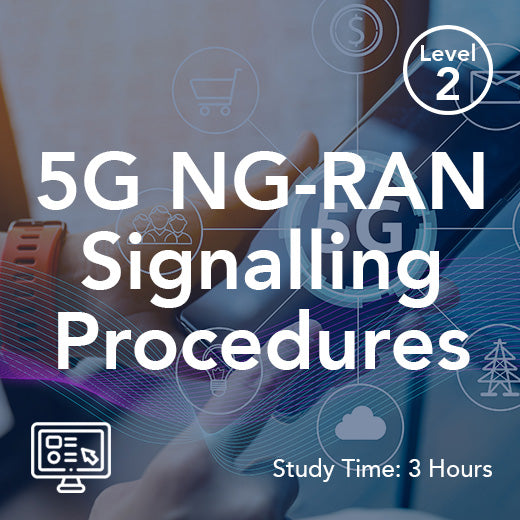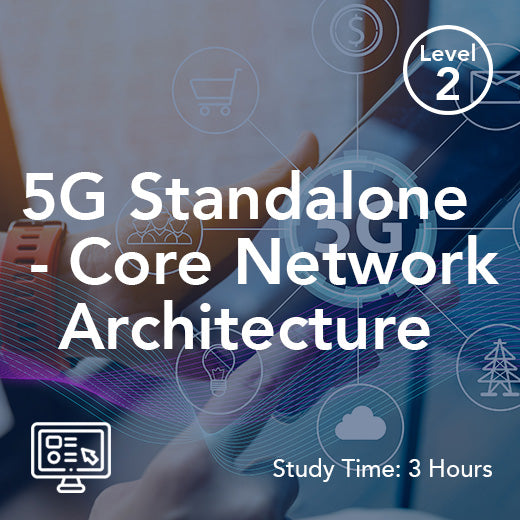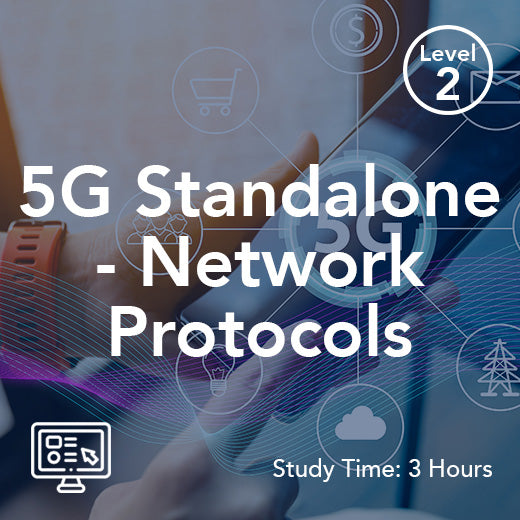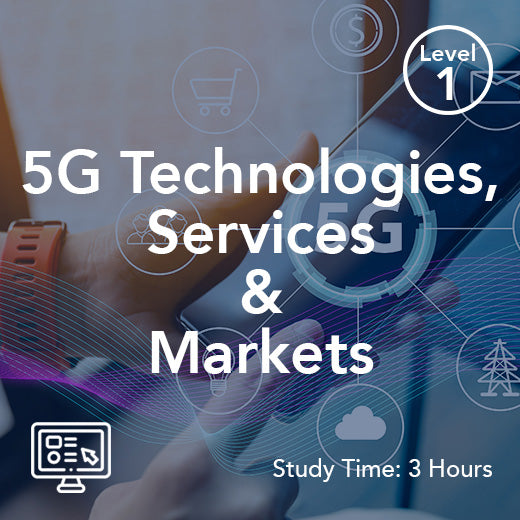Unlocking the Potential: How Network Slicing is Revolutionising 5G Use Cases
- , by Stephanie Burrell
- 21 min reading time
As we stand on the brink of a new era in telecommunications, network slicing is emerging as a game-changer in the realm of 5G technology. This innovative approach allows operators to partition a single physical network into multiple virtual networks, each tailored to meet specific requirements of diverse applications. From enabling seamless connectivity in smart cities to enhancing the efficiency of industrial automation, network slicing unlocks a myriad of possibilities. Network slicing use cases span various industries and applications, supporting multiple services and functions on a single network. In this discussion, we will delve into how this technology is revolutionising 5G use cases, offering unprecedented flexibility and efficiency. Join us as we explore the transformative impact of network slicing on various sectors and its potential to reshape our digital landscape.
Understanding Network Slicing
What is Network Slicing?
Network slicing is a pivotal advancement in the realm of 5G technology. It refers to the process of creating multiple virtual networks on a single physical network infrastructure. Each slice operates independently and can be customised to meet specific service requirements. This is akin to having several unique networks coexisting on the same hardware, each optimised for a particular use case. Network slicing enables operators to create multiple virtual networks, with each acting as a separate slice tailored for different applications, protocols, or industries. The concept leverages software-defined networking and network function virtualisation to allocate resources dynamically multiple discrete networks. By doing so, it ensures that different applications receive the precise network characteristics they need. User equipment (UE) interacts with these virtual networks, and device subscriptions can be configured for different slice attributes such as coverage, throughput, and latency. This includes varying levels of bandwidth, latency, and security protocols. Network slicing is crucial for supporting a wide array of 5G applications, from consumer mobile services to complex industrial IoT systems. It offers the flexibility and efficiency required to cater to diverse and evolving digital demands.
Key Benefits of Network Slicing
Network slicing offers several significant advantages in the context of 5G networks. Firstly, it provides enhanced flexibility and efficiency by allowing multiple, distinct services to coexist on the same infrastructure. Network slicing enables the deployment of different services and service types, each with unique services requirements such as bandwidth, latency, and reliability. Each network slice can be tailored to suit specific application needs, such as ultra-low latency for autonomous vehicles or high bandwidth for streaming services. This customisation ensures optimal resource utilisation, reducing wastage and improving overall network performance. Secondly, network slicing facilitates rapid deployment of new services. Operators can quickly create and manage slices of existing services without the need for extensive physical infrastructure changes. This agility is crucial in responding to market demands and technological advancements. Furthermore, network slicing enhances security by isolating network traffic. Each slice can have its own security protocols, which minimises the risk of cross-contamination between services. In essence, network slicing empowers operators to deliver specialised, efficient, and secure services, driving innovation across various sectors.
How Network Slicing Works
Network slicing operates by leveraging advanced technologies such as software-defined networking (SDN) and network function virtualisation (NFV). These technologies decouple network functions from the underlying hardware, allowing for a more flexible and dynamic allocation of network resources. The network segmentation process begins with defining the specific requirements of an application, such as bandwidth, latency, and security needs. Once identified, a virtual slice is created that matches these criteria. Each slice runs over the same physical network but functions independently, as if it were a standalone network. The orchestration and management of these slices are handled by an intelligent control system. This system ensures that resources are allocated as needed and that performance targets are met. The orchestration system guarantees that each slice receives the necessary resources, including specific allocations of bandwidth, latency, and reliability, to support optimal operation for applications like industrial automation. Moreover, network slicing can adjust in real-time, scaling resources up or down based on demand. This adaptability is crucial for managing the varying needs of different applications, ensuring reliable and efficient service delivery. Maintaining robust network connectivity across access, transport, and core networks is essential to support seamless communication for all slices.
Revolutionising 5G Use Cases
Enhancing Mobile Broadband
Network slicing significantly enhances mobile broadband by optimising network performance and resource allocation for high-demand applications. In the context of mobile broadband, network slicing allows for the creation of dedicated slices private networks that prioritise data-heavy services such as video streaming, online gaming, and virtual reality experiences. This ensures that users receive high-speed, reliable connections even during peak usage times. Furthermore, network slicing can adapt to varying network conditions, dynamically adjusting resources to maintain consistent service quality. Monitoring packet loss is essential for ensuring high-quality mobile broadband services, as advanced technologies are used to detect and mitigate packet loss to maintain optimal performance. This adaptability is crucial in handling the surge in data consumption driven by modern digital lifestyles. By efficiently managing bandwidth and reducing latency, network slicing offers an improved user experience. It supports seamless connectivity with minimal disruptions, thereby meeting the expectations of today’s mobile users. Additionally, by isolating network traffic, network slicing enhances security and minimises interference, further boosting the overall quality of mobile broadband services.
Enabling IoT Connectivity
Network slicing plays a crucial role in enabling robust IoT connectivity within 5G networks. The Internet of Things comprises a vast array of connected devices now, from smart home gadgets to industrial sensors, each with distinct connectivity requirements. Network slicing addresses these varied needs by creating dedicated slices that cater to specific IoT applications. For instance, critical applications such as healthcare monitoring or autonomous vehicles demand ultra-reliable, low-latency connections. In contrast, non-critical sensors might prioritise power efficiency over speed. By tailoring network slices accordingly, operators can ensure optimal performance for each use case. This capability is particularly important in environments where IoT devices are densely populated, as it allows for efficient resource management and reduced interference. Network elements play a key role in supporting IoT connectivity by ensuring that each device and application is properly integrated and managed within its dedicated slice.
Moreover, network slicing facilitates seamless integration of new IoT devices, supporting scalability and future growth. Ultimately, this technology underpins the widespread adoption of IoT solutions, enabling innovative applications across various industries.
Transforming Enterprise Networks
Network slicing is poised to transform enterprise networks by offering unprecedented customisation and efficiency. Enterprises often require networks that are tailored to their specific operational needs, which can range from handling confidential data transfers to supporting remote workforces. With network slicing, businesses can have common physical infrastructure and have bespoke virtual networks that prioritise these unique requirements. By leveraging a common infrastructure, enterprises can efficiently deploy multiple virtual networks, each optimised for distinct operational needs, without duplicating physical resources. This means an enterprise can allocate a slice with enhanced security features for sensitive data while another slice can optimise bandwidth for video conferencing. Additionally, network slicing allows enterprises to scale their network resources dynamically, matching the fluctuations in demand without the need for additional physical infrastructure. This flexibility supports business agility, enabling rapid adaptation to changing market conditions or technological advancements. Furthermore, by isolating network functions, network slicing minimises the risk of disruptions and enhances overall network reliability. In essence, this technology empowers enterprises to optimise their digital operations, driving efficiency and innovation across various sectors.
Technical Aspects of Network Slicing
Architecture and Design
The architecture and design of network slicing are central to its ability to deliver customised virtual networks over a shared physical infrastructure. At its core, network slicing utilises an architecture network based on three layers: the service layer, the control layer, and the infrastructure layer. This three-layered approach is fundamental to the network slicing architecture, supporting resource isolation, logical topology creation, and lifecycle management.
The service layer defines the specific requirements and characteristics of each slice. The network slice management layer orchestrates the creation, deployment, and management of slices, ensuring resources are optimally allocated. The control layer manages logical topologies, associates network slices with physical resources, and is responsible for distributing, collecting, and calculating network slice information. The network slice control layer is a key component that provides logical network slice instances, connects them with specific resource sets, and controls the formation and optimization of network slices.
Finally, the infrastructure layer provides the physical network resources that support and deploy these virtual slices. The network slice forwarding layer, as part of the architecture, allocates and divides forwarding resources for each slice, ensuring flexible and refined resource reservation. Within this architecture, physical network resources are divided into multiple sets of isolated resources to support multiple network slices concurrently.
Data planes and control planes are separated in this architecture, with the data plane responsible for identifying and forwarding network slice resources, and the control plane handling session management, network slice orchestration, and resource isolation. Sub interfaces are used to allocate and reserve resources on physical network interfaces for different slices, enhancing resource management and isolation.
Core networks are separated and managed among different slices to optimize performance, reduce latency, and simplify management. Network slicing extends across different network domains, such as access, transport, and core, making it essential to manage and secure each domain individually for end-to-end service delivery.
The use of slice id enables the identification and management of network slices, simplifying resource allocation and network deployment. Network slice information is crucial for coordinating and managing the different layers of the architecture, ensuring tailored service delivery. Lifecycle management automates the provisioning, deployment, maintenance, and optimization of network slices, supporting efficient and dynamic 5G network slicing operations.
This layered approach ensures scalability, enabling the network to adapt to varying demands while maintaining efficiency and performance, thus supporting diverse 5G applications.
Security Considerations
Security is a critical aspect of network slicing, given its role in supporting diverse and often sensitive applications. The isolation of different network slices inherently offers a degree of security by preventing cross-traffic interference. However, this isolation must be managed correctly to ensure robust protection. Each slice can be configured with specific security protocols tailored to its needs, such as encryption, authentication, and access control measures. This configurability helps protect data integrity and confidentiality across different slices. Additionally, monitoring and real-time threat detection mechanisms are essential to safeguard against potential cyberattacks. The dynamic nature of network slicing requires automated security management tools capable of responding swiftly to threats without human intervention. Furthermore, collaboration between telecom operators and cybersecurity experts is crucial for developing comprehensive security strategies that address the unique challenges posed by network slicing. Overall, ensuring the security of network slicing is vital for maintaining trust and reliability in 5G networks.
Performance Optimisation
Performance optimisation within network slicing is key to leveraging the full potential of 5G networks. This involves the strategic allocation and management of resources to meet the specific demands of each network slice instance. Key to this process is the use of advanced algorithms and artificial intelligence (AI) which dynamically adjust resource allocation in real-time. By monitoring network conditions and usage patterns, these systems can optimise parameters such as bandwidth, latency, and throughput, ensuring each slice operates at peak efficiency. Moreover, the ability to prioritise critical applications, such as emergency services or high-resolution video streaming, ensures consistent performance even during peak demand. Optimizing the separation of control and user plane functions within network slices can help reduce latency, especially by deploying these functions closer to the network edge. Load balancing and traffic management techniques further enhance performance by distributing network traffic evenly across available resources. Additionally, continuous performance monitoring allows for proactive maintenance and adjustments, minimising downtime and enhancing reliability. Ultimately, these optimisation strategies are crucial for delivering the high-performance expectations associated with 5G-enabled services.
Network Slice Management and Orchestration
Network slice management and orchestration are at the heart of realising the full potential of 5G network slicing. By enabling the creation, deployment, and dynamic management of multiple virtual networks on the same physical infrastructure, these processes ensure that each network slice is precisely tailored to its intended use case. Whether the goal is ultra low latency for mission-critical applications, high bandwidth for immersive media, or high reliability for industrial automation, effective network slice management guarantees that every slice meets its unique service requirements. This capability allows networks to flexibly adapt to changing demands, supporting a wide range of services on a single 5G network. As a result, network slicing empowers operators to deliver differentiated experiences, all while maximising the efficiency of their physical infrastructure.
Network Slice Management: Principles and Practices
At the core of network slice management is the ability to oversee the entire lifecycle of network slices, from initial planning and deployment to ongoing maintenance and optimisation. The network slice management layer plays a pivotal role in this process, ensuring that each network slice receives the necessary network resources and is configured to deliver the required service characteristics. Resource allocation is a fundamental principle, as it involves distributing bandwidth, compute power, and other network resources to each slice based on its specific service requirements. This ensures that high-priority slices, such as those supporting emergency services or autonomous vehicles, always have the resources they need.
Configuring network functions is another key aspect, as each network slice may require different network functions—such as firewalls, routers, or security solutions—tailored to its intended application. Logical isolation is equally important, as it guarantees that each network slice operates independently from other slices, preventing interference and enhancing security. This isolation allows network operators to confidently support a diverse array of services on the same network, knowing that the performance and security of one slice will not impact others. Through these principles and practices, network slice management enables the flexible, secure, and efficient operation of multiple network slices within a single network.
End-to-End Network Orchestration: Achieving Seamless Integration
End-to-end network orchestration is essential for delivering seamless service experiences across the various domains of a 5G network, including the radio access network, transport network, and core network. This orchestration ensures that network functions and resources are coordinated across all domains, so each network slice consistently meets its service requirements from end to end. The network slice controller is central to this process, managing the lifecycle of network slices—including their creation, modification, and deletion—across the entire network.
Service provisioning is another critical component, involving the configuration of network functions and the allocation of network resources to match the specific needs of each slice. This ensures that, whether a slice is supporting high-speed video streaming or ultra-reliable industrial automation, it is optimally provisioned for its intended service. Data plane management further enhances this integration by directing the flow of data between network functions and domains, maintaining the performance and reliability of each network slice.
By orchestrating these elements across the radio access network, transport network, and core network, end-to-end network orchestration enables network operators to deliver a wide range of services with guaranteed performance, security, and reliability. This holistic approach is what allows network slicing to support the diverse and demanding requirements of modern 5G applications.
Real-World Applications
Smart Cities and Infrastructure
Network slicing is pivotal in the development and operation of smart cities, offering tailored connectivity solutions for a range of urban applications. In a smart city, diverse services such as traffic management, public safety, and utility monitoring require distinct network characteristics. Network slicing enables the creation of dedicated slices for each application, optimising performance and ensuring reliable service delivery. Network slicing also allows the allocation of specific pathways for different tasks, such as safety messages, entertainment, and utility monitoring, ensuring efficient and secure operation in smart cities. For example, a slice focused on traffic management can prioritise low-latency data transmission, allowing real-time adjustment of traffic lights to alleviate congestion. Similarly, public safety services can utilise secure and robust slices to support emergency response communications. Furthermore, utility providers can leverage slices that ensure efficient data collection from smart meters, aiding in resource management and sustainability efforts. By providing these flexible services with specialised network capabilities, network slicing supports the integration of technology into urban environments, enhancing infrastructure efficiency and improving the quality of life for city residents.
Healthcare and Medical Innovations
Network slicing is transforming healthcare by enabling a new wave of medical innovations and services. In healthcare settings, reliability, low latency, and security are paramount. Network slicing allows for the creation of specialised slices that cater to these stringent requirements. Specific network slices can be created and managed for different healthcare applications, ensuring tailored performance and security for each use case. For instance, telemedicine applications can benefit from dedicated slices that ensure high-quality video consultations with minimal delay, thereby facilitating remote diagnosis and treatment. Additionally, for applications involving real-time data, such as remote surgery or robotic-assisted procedures, network slicing provides the necessary ultra-low latency and high reliability. Moreover, healthcare data, often sensitive and confidential, can be transmitted over secure slices, safeguarding patient privacy and meeting regulatory compliance. Beyond patient care, hospital operations can also be streamlined public network using. Smart devices and IoT sensors can be integrated into hospital infrastructure, using specific slices to monitor equipment status and patient conditions in real-time. By enhancing connectivity and reliability, network slicing is driving significant advancements in healthcare delivery.
Automotive and Transportation
Network slicing is revolutionising the automotive and transportation sectors by providing the connectivity needed for advanced vehicular technologies. In the realm of autonomous vehicles, reliable, low-latency communication is essential for safe operation. Network slicing enables the creation of dedicated slices that ensure instantaneous data exchange between vehicles and infrastructure, supporting real-time decision-making processes. Network slicing allows operators to create separate slices for specific automotive applications, protocols, and operational requirements, improving efficiency and integration. This is crucial for applications like collision avoidance systems and adaptive cruise control, where split-second reactions are required. Additionally, network slicing facilitates vehicle-to-everything (V2X) communication, allowing vehicles to interact with their environment and enhancing traffic efficiency and safety. In public transportation, network slicing supports the integration of IoT devices, offering real-time tracking and management of fleets. This improves scheduling accuracy and passenger information systems. Furthermore, secure slices can be employed to protect sensitive data related to payment systems and passenger privacy. By enabling these technological advancements, network slicing is paving the way for smarter, safer, and more efficient transportation solutions.
Business Impact and Monetization
Network slicing is not just a technological breakthrough—it is also a catalyst for new business opportunities and revenue models for network operators. By leveraging network slicing, operators can move beyond traditional, one-size-fits-all services and offer highly customised network experiences tailored to the needs of different industries and use cases. This flexibility opens the door to a host of new services, each with its own value proposition and monetization potential.
Monetizing Network Slicing: New Revenue Streams and Business Models
Network slicing enables network operators to tap into new revenue streams by delivering bespoke network slices designed for specific industries and applications. For example, operators can offer industry-specific services such as smart manufacturing, where dedicated network slices provide the ultra low latency and high reliability required for industrial automation. In healthcare, customised slices can support mission-critical services like remote surgery or emergency services, where low latency and guaranteed performance are essential.
The rise of IoT and smart cities also presents significant opportunities, as operators can create network slices tailored to the unique service requirements of connected devices and infrastructure. By offering these differentiated services, network slicing enables operators to address the needs of a wide range of industries, from autonomous vehicles to public safety.
To capitalise on these opportunities, operators are adopting innovative business models such as Network-as-a-Service (NaaS), where customers can request and manage their own network slices based on specific service requirements. Slice-based pricing models allow operators to charge customers according to the characteristics and performance guarantees of each network slice, creating a more flexible and value-driven approach to service delivery. Additionally, partnerships and collaborations with industry players enable operators to co-develop customised network solutions, further expanding their reach and revenue potential.
In summary, network slicing enables network operators to diversify their offerings, create new business models, and unlock fresh revenue streams—all while delivering the high-performance, reliable, and secure services that modern industries demand.
Future Prospects and Challenges
Emerging Trends in Network Slicing
As network slicing continues to evolve, several emerging trends are shaping its future. One notable trend is the integration of artificial intelligence (AI) and machine learning (ML) in managing network slices. These technologies enable predictive analytics and automated decision-making, enhancing the efficiency and adaptability of 5g network slicing operations. Another trend is the increasing emphasis on edge computing, which complements network slicing by reducing latency and improving service delivery closer to the end-user. This is particularly beneficial for applications requiring real-time data processing, such as augmented reality and IoT. Additionally, as 5G networks expand, there's a growing focus on ensuring interoperability between different network operators. Standardisation efforts are underway to facilitate seamless connectivity across networks, enhancing the global reach of 5G services. Furthermore, the development of 6G technologies is expected to bring new capabilities and challenges, pushing the boundaries of what network slicing can achieve in terms of speed, reliability, and innovation.
Addressing Implementation Challenges
Implementing network slicing presents several challenges that need to be addressed for its successful deployment. One significant challenge is the complexity of integrating network slicing functionality with existing infrastructure. This involves upgrading older systems to support virtualisation and automation technologies necessary for slicing. Additionally, ensuring interoperability across different vendors and network operators is crucial to avoid fragmentation and to allow seamless connectivity. Another challenge lies in the management and orchestration of multiple network slices, which requires sophisticated algorithms and real-time monitoring to maintain performance and efficiency. Furthermore, security is a major concern, as each slice must be protected against potential breaches while maintaining the overall integrity of the network. As network slicing becomes more prevalent, regulatory frameworks must also evolve to address issues related to spectrum allocation and service quality standards. Addressing these challenges involves collaboration across industry stakeholders and continuous innovation in technology and policy development.
Long-term Impact on Telecommunications
The long-term impact of network slicing on telecommunications is set to be transformative. By enabling the creation of highly specialised virtual networks, network slicing technology offers unprecedented flexibility and efficiency, paving the way for the widespread adoption of new technologies. This adaptability will allow telecom operators to cater to a broader range of industries, driving innovation and creating new revenue streams. Furthermore, network slicing has the potential to significantly reduce operational costs by optimising resource utilisation and minimising the need for physical infrastructure expansion. In the long run, this could lead to more competitive pricing for end-users. The increased customisation capabilities also mean enhanced service quality, improving customer satisfaction and loyalty. Additionally, as 5G evolves and transitions into 6G, network slicing will continue to play a crucial role in meeting the growing demands for connectivity. Ultimately, this technology is poised to fundamentally reshape the telecommunications landscape, fostering an era of unprecedented connectivity and digital transformation.


































